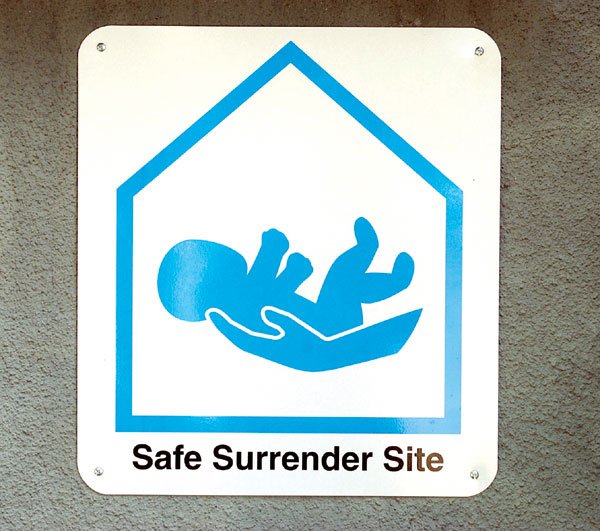Gilroy
– One of the county’s first
”
safe surrenders
”
of a newborn took place last month at Good Samaritan Hospital in
San Jose, as part of a no-questions-asked program designed to
prevent infant abandonment.
Gilroy – One of the county’s first “safe surrenders” of a newborn took place last month at Good Samaritan Hospital in San Jose, as part of a no-questions-asked program designed to prevent infant abandonment.
Under the terms of the program, a parent can give up a child within 72 hours of birth at designated hospitals and fire stations throughout the county.
“We can’t confirm that it’s the county’s first safe surrender, but within the last six weeks we have had an infant safely returned,” said Leslie Kelsay, spokeswoman for Good Samaritan.
Roland Velasco, a Gilroy councilman who serves as a policy aide on hospitals and social work for County Supervisor Don Gage, said the surrender took place April 2.
Kelsay would not disclose the sex of the child or the parent.
“The surrendering parent came into the emergency department and let the registration clerk know that they had a newborn they wished to surrender,” she explained. “The parent then immediately met with a registered nurse who put a wristband on the baby and gave the surrendering parent a matching wristband. There is a statutory period of two weeks when a parent can call child protective services and say ‘I’ve changed my mind.'”
County spokeswoman Gwendolyn Mitchell confirmed the parent did not reclaim the child.
“One of the aspects of the safe surrender program is that we can assure the parent they can do this without fear of questions or punishment,” Mitchell said.
If the parent decides to keep the child after the two-week period expires, he or she must go through the court system to regain custody from Santa Clara County Child Support Services. Otherwise the child is put up for adoption.
Last summer, three infants were abandoned in Santa Clara County and one in Salinas. In response, the county formed a Safe Haven Task Force that put together recommendations to encourage safe surrender at hospitals and fire stations. As part of the plan, approved by county supervisors in November, the County Fire Department provided a Safe Surrender Baby sign and two medical kits to each of the county’s 95 fire stations, as well as 30 kits to the American Medical Response units that transport babies to the hospital. Each kit includes a pair of identifying wrist bands for the surrendering party and an anklet for the baby, a medical questionnaire, and instructions.
In January, Gilroy joined other cities in Santa Clara County to allow its local fire stations to sign on as safe surrender sites.
The Gilroy station on Chestnut Street now has a white and blue sign depicting a newborn cupped by a hand. Firefighters have received training to handle surrenders, according to Phil King, chief of emergency medical services.
In his 20 years of service as a firefighter, King said he has never experienced a child left on the front step of a fire station. But that’s no reason to be unprepared.
“I think there should be an outlet to do that,” he said. “Otherwise, the alternative is that babies will be showing up in dumpsters. The difficulty from my view is how do you get the message to the right people? Are we able to get to the people who have the potential to do that?”
The fire department and Saint Louise Regional Hospital are collaborating on a program to resolve that issue, according to hospital spokeswoman Vivian Smith.
Ideas for outreach programs include a program for high-school age students.
“That might be a population where this might help,” Smith said.
“We also talked about raising awareness about the symbol itself,” she added, referring to the blue and white sign.
To keep themselves sharp on procedure, hospitals and fire stations in Gilroy and the rest of the county will conduct drills on May 26.
When it comes to real-life situations, officials stressed that any parent who surrenders a child is guaranteed anonymity, but can choose to provide information about themselves or the child using a questionnaire available at the fire station or hospital.
Further, the hospital will offer medical care if the surrendering parent is the mother or, if she declines, instructions on self-care. The hospital accepting the child will also connect mothers with a community clinic for medical attention, “in case the mother is more comfortable working with someone who’s not accepting the baby,” Kelsay said. “They need to know they have options.”
She would not say if the parent who surrendered her child in April accepted medical services, but confirmed that the baby is in good health.
Kelsay said “the fact that the hospital and all of the associated county agencies have worked so hard to protect the identity in this specific instance should really show anyone who’s faced with this particular situation that if they do come into a hospital or fire station to surrender their baby, they’re going to be treated with respect, concern for their baby, and complete confidentiality.”














